HTC unveils the Desire EYE, a selfie-centric high-end smartphone with a 13MP camera at its front
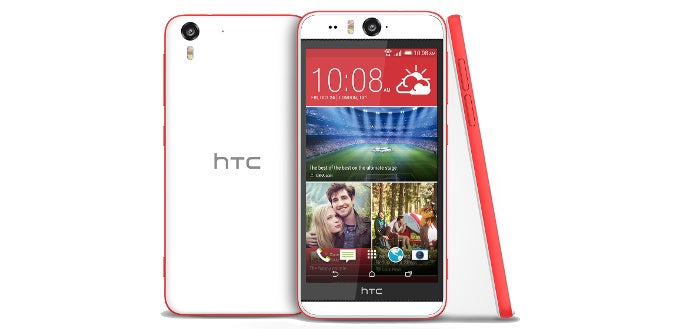
HTC's most recent flagships, the HTC One and the HTC One (M8), have been getting quite a lot of flak due to their underperforming Ultrapixel rear cameras, but the company has been rarely criticized for failing to endow its high-end phones with good front-facing snappers. It looks that the company is trying to push the limits in this segment even more, as its latest device can easily snatch the crown and become the ultimate selfie phone from a well-known manufacturer.
Design
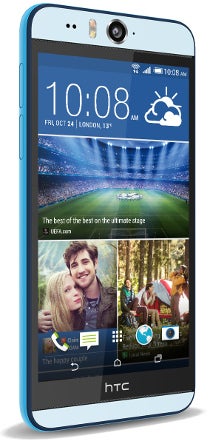
The front-facing BoomSound speakers at the front of the device have most probably taken their toll on the size, too – you might not see them at first sight, but they are right there, hidden between the display's black bezels and the contrasting frame. The BoomSound speakers also come with the signature built-in audio amplifiers. Meanwhile, a trio of noise-canceling microphones and HTC's Sense Voice technology take care of your voice reproduction.
Oh, and HTC has finally jumped on the trendy-of-late water-resistant bandwagon, as the HTC Desire EYE is IPX7-certified, meaning that it can survive in up to 1 meter of water for as long as 30 minutes.
Hardware specs and features
The whole HTC Desire EYE shebang is being powered by a quad-core Qualcomm Snapdragon 801 SoC, which is turning and churning the gears at 2.3GHz. The 2GB of RAM on board pave the way for a rather hassle-free multitasking experience. Speaking of memory, the Desire EYE has 16GB of on-board storage (roughly 8.9GB available to the user right out of the box) and a microSD slot, which supports up to 128GB microSD cards.
Camera
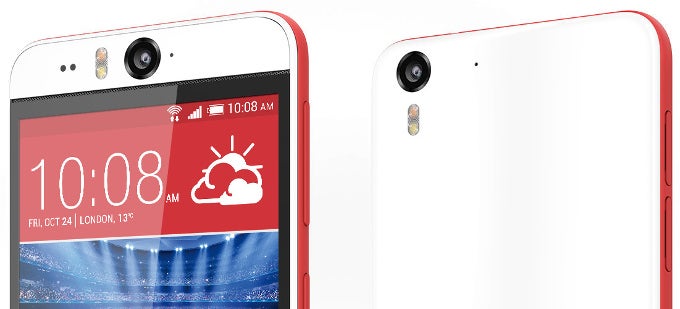
Well, this is where the HTC Desire EYE truly shines, as the front-facing shooter of the device is a true zinger, at least on paper! We can find a duo of 13MP snappers both at the front and at the back, both endowed with dual LED flashes. The cameras are not strictly the same, though. The rear one has a wide-angle BSI (backside-illuminated) sensor with a 28mm lens and an f/2.0 aperture, whereas the selfie camera comes with a wider 22mm lens, but a smaller f/2.2 aperture. The front-facing camera also comes with auto-focus and will allow users to zoom in and out before taking the coveted self-portrait.
HTC elaborately explained what most of these do and it looks like that they are nothing short of welcome. EYE Experience's face tracking does not only keep your face in focus at all times, it can also track the faces of up to four people and keep them on focus and in the frame. Split Capture, on the other hand, uses the front camera to take a picture of you and the rear camera to record a brief video, afterwards combining them into one. Voice Selfie allows you to take a picture or record a video by saying one of the supported voice commands.








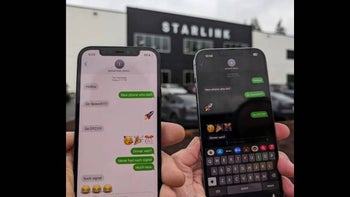

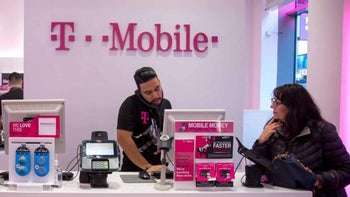


Things that are NOT allowed: